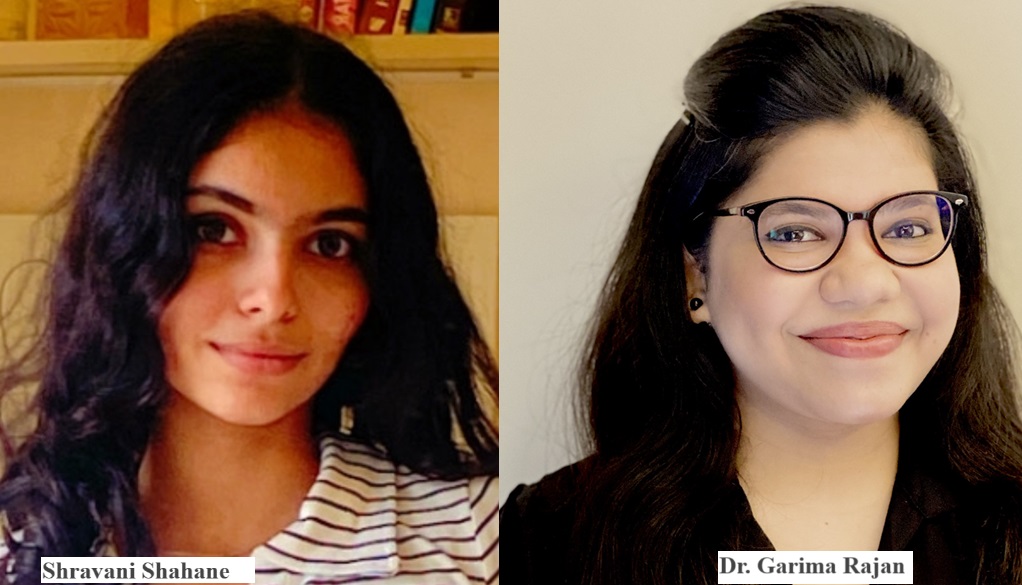“Live Long and Prosper”: Successful Aging through the Lens of Positive Psychology

By Shravani Shahane and Dr. Garima Rajan
Department of Psychological Sciences, FLAME University
Pune, 17th October 2024: Aging is often viewed with a backdrop of loss or decline. Positive geriatric psychology challenges this notion by emphasizing successful and positive aging. It is not just about extending one’s lifespan but making it productive and meaningful. It is a universal fact that humans desire to extend their healthy lifespans for as long as possible, prosper, remain productive, and more importantly, stay mentally fit in their later years.
‘Aging Successfully’: The Concept of Healthy and Positive Aging
Aging is a slow gradual process that all individuals have to experience inevitably. An older adult goes through many challenges and changes in this period, and these stressors usually cause distress, leading to feelings of insecurity, and can experience a lack of self-worth and self-esteem. Hence, aging becomes an important period, and how one ages becomes significant, as it influences how one looks at their life (Pandey & Garg, 2018). This is where the lens of positive psychology becomes important.
Today, we look at a changed scenario, where positive aging is not just the mere absence of psychological or biological disorders, but the probability of having a good prognosis, where the older adult population can express autonomy over their lives and make appropriate decisions about their health (Jeste & Depp, 2010).
While it is true that every aspect of physical health should be counted while examining general well-being, older adults can still experience happiness regardless of their physical hardships by investing and building upon their psychosocial factors and abilities (Izal et al., 2019). Positive aging not only looks at characteristic features of aging but emphasizes productive, successful, and healthy aging (Bar-Tur, 2021). The key to positive psychology is well-being, which can be seen manifested in concepts like positive emotions that include the state of feeling good, experiencing gratification, engagement, positive social relationships, and accomplishment in life (Izal et al., 2019).
Addressing the Common Challenges among Older Adults
The two most common challenges, usually mistaken as one, are loneliness and social isolation. Both might sound similar, but there is a gap between the two: Social isolation is the objective lack of social connections and interactions while loneliness is the negative subjective condition of being socially isolated. Both phenomena are directly associated with deteriorating physical and mental health, with a risk of the individual growing into depression. (Lam et al., 2020)
Aging and Positive Psychosocial Characteristics
While facing adversities and age-related conditions, it is important to recognize the importance of psychological well-being, which decides how the individual copes with the hardships. Psychosocial characteristics are such characteristics that influence psychological well-being. It includes factors like social experiences, relationships, prosocial behavior like giving back to society, and purpose in life (Bar-Tur, 2021). Optimism and resilience can be considered the basis of psychological well-being against the backdrop of successful aging. Practicing to improve and enhance these characteristics in an age where an individual is always faced with challenges, leads to an optimistic life.
Social resources embedded in an individual, like social networks and the ability to maintain and grow it, feeling satisfied with social relationships like family and friends, and spending more time with family members lead to the positive development of physical as well as mental health throughout their aging period. Intrapersonal psychology also plays a significant role, where having positive feelings and attitudes about one’s health even in the face of age-related physical adversities, always encourages overall wellbeing (Dumitrache et al., 2018).
Moreover, successful aging, with or without diseases may exist and continue to exist if compensatory social mechanisms are used to intervene (Michel & Sadana, 2017). Social communication and interconnectedness are a few of the factors that directly influence successful aging (Estebsari et al., 2020).
Enhancing these psychosocial factors and maintaining them is directly linked to resilience. A part of social tasks is related to how opinion about successful aging, and its perception are shaped within the society. The individuals should have the autonomy to direct this perception in the community. Hence, family members, friends, and other social relationships along with public healthcare provided by society are important in building resilience, hence forming a path towards positive aging (Estebsari et al., 2020).
Social well-being correlates to health. Social networks are often measured qualitatively, structurally, and functionally. A poor result of social relationships or networks is often associated with increased vulnerability to several age-related physical and psychological conditions. Additionally, social engagement is related to a reduced risk of mortality (Kim et al., 2021). Hence, these psychosocial characteristics are considered predictors rather than outcomes of successful and healthy aging (Hodge et al., 2013).
Aging and Positive Psychosocial interventions (PPIs)
Considering the role of psychosocial characteristics discussed before, social connectedness is one of the most significant markers of well-being, hence, leading to successful aging. The subjective feeling of isolation can lead to reduced health and well-being, poor life satisfaction, and decreased resilience. The converse of loneliness- social connectedness, hence becomes a basic human need and promotes wellbeing. Keeping the principles of positive psychology in mind, various interventions have come up and are being implemented by mental health professionals.
Personal contact includes calling/video-conferencing/meeting/writing to someone from one’s social circle. Participating in group activities and discussions on a unanimously decided topic, like gardening, music, storytelling, etc. For older adults who are fond of animals, Animal contact is one of the interventions used. It is said to increase serotonin levels, especially in a period of serious age-related adversities. Realising the importance of psychosocial skills, older adults are provided with a skill course, focusing on developing personal skills. (O’Rourke et al., 2018) Enhancement of psychosocial characteristics through these interventions yields positive outcomes like positive coping strategies, increased promotion of health, and direct physiological influence on neural, hormonal, and biological functions of the body. (Hodge et al., 2013)
There are a lot of channels through which the enhancement of social relationships helps improve well-being, leading to healthy aging. They are social support, which covers financial, emotional, and instrumental support, the second is social influence which covers social norms as per various cultures and the third being social engagement which includes maintenance and preservation of meaningful social relationships and roles in society. (Kim et al., 2021)
These interventions also include the promotion of health within oneself. This means realizing what one’s strong points are, and rendering and cultivating one’s physical, social, and cognitive qualities. A very significant step is the promotion of optimal aging. Getting the older population acquainted with the ABD Model: Activating events, adversities, and Beliefs-Consequences is important. This will lead them to build strong attitudes toward themselves and accept themselves as they are (Bar-Tur, 2021).
PPIs and their Behavioural Outcomes
Biopsychosocial functions directly influence aging. Increasing age often means increased stress, including family, financial, or emotional. Encouraging positive psychosocial factors are said to have a combating influence on stress. These interventions enhance psychosocial characteristics leading to restorative behavior like increased physical activity, healthy sleep and diets, and reducing unhealthy behaviors and coping strategies. (Aldwin & Igarashi, 2015; Kim et al., 2021)
To conclude, strengthening psychosocial characteristics with the help of positive psychology plays a crucial role in encouraging successful aging. As individuals age, factors apart from health like social support, resilience, positive attitudes, meaning in life, and a sense of purpose become pivotal. As we grow towards understanding aging as a positive phenomenon, the aim should be a meaningful existence, not just increasing lifespan.
About the Authors:
Shravani Shahane is an Undergraduate Psychology Major Student and Dr. Garima Rajan is an Assistant Professor of Psychology at FLAME University, Pune.
References
Aldwin, C., & Igarashi, H. (2015). Successful, optimal, and resilient aging: A psychosocial perspective. (pp. 331–359). https://doi.org/10.1037/14458-014
Bar-Tur, L. (2021). Fostering Well-Being in the Elderly: Translating Theories on Positive Aging to Practical Approaches. Frontiers in Medicine, 8, 517226. https://doi.org/10.3389/fmed.2021.517226
Dumitrache, C., Rubio, L., & Cordón-Pozo, E. (2018). Successful aging in Spanish older adults: The role of psychosocial resources. International Psychogeriatrics, 31, 1–11. https://doi.org/10.1017/S1041610218000388
Estebsari, F., Dastoorpoor, M., Khalifehkandi, Z. R., Nouri, A., Mostafaei, D., Hosseini, M., Esmaeili, R., & Aghababaeian, H. (2020). The Concept of Successful Aging: A Review Article. Current Aging Science, 13(1), 4–10. https://doi.org/10.2174/1874609812666191023130117
Hodge, A. M., English, D. R., Giles, G. G., & Flicker, L. (2013). Social connectedness and predictors of successful ageing. Maturitas, 75(4), 361–366. https://doi.org/10.1016/j.maturitas.2013.05.002
Izal, M., Nuevo, R., & Montorio, I. (2019). Successful Aging and Positive Psychology: Two Empirically Related Perspectives. OBM Geriatrics, 3(4), Article 4. https://doi.org/10.21926/obm.geriatr.1904094
Jeste, D. V., & Depp, C. A. (2010). Editorial: Positive Mental Aging. The American Journal of Geriatric Psychiatry : Official Journal of the American Association for Geriatric Psychiatry, 18(1), 1–3. https://doi.org/10.1097/JGP.0b013e3181c3ef09
Kim, E. S., Tkatch, R., Martin, D., MacLeod, S., Sandy, L., & Yeh, C. (2021). Resilient Aging: Psychological Well-Being and Social Well-Being as Targets for the Promotion of Healthy Aging. Gerontology and Geriatric Medicine, 7, 23337214211002951. https://doi.org/10.1177/23337214211002951
Lam, J., Aftab, A., Lee, E., & Jeste, D. (2020). Positive Psychiatry Interventions in Geriatric Mental Health. Current Treatment Options in Psychiatry, 7(4), 471–488. https://doi.org/10.1007/s40501-020-00228-6
Michel, jean-pierre, & Sadana, R. (2017). “Healthy Aging” Concepts and Measures. Journal of the American Medical Directors Association, 18. https://doi.org/10.1016/j.jamda.2017.03.008
O’Rourke, H. M., Collins, L., & Sidani, S. (2018). Interventions to Address Social Connectedness and Loneliness for Older Adults: A scoping review. BMC Geriatrics, 18(1), 214. https://doi.org/10.1186/s12877-018-0897-x
Pandey, J. M., & Garg, S. (2018). Positive Psychology and Aging. Handbook of Research on Geriatric Health, Treatment, and Care (pp. 1–16). IGI Global. https://doi.org/10.4018/978-1-5225-3480-8.ch001








